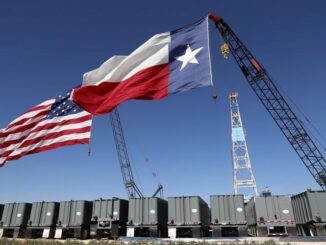
In a strategic move to streamline its portfolio and unlock capital, BP plc announced on November 3, 2025, the divestment of non-controlling interests in its US onshore midstream assets to funds managed by investment firm Sixth Street for a total consideration of $1.5 billion.
This transaction aligns with BP’s broader goal of achieving $20 billion in divestments by the end of 2027, as outlined in its February 2025 Capital Markets Update.
Below, we break down the key details of the deal, examine BP’s recent financial performance, and explore what this cash infusion could mean for investors.
Deal Overview and Structure
The agreement involves BP’s US onshore oil and gas business, bpx energy, selling minority stakes in midstream assets located in the Permian and Eagle Ford basins—two of the most prolific shale regions in the United States.
Midstream assets typically include pipelines, processing facilities, and infrastructure that transport and handle oil and gas from wells to end markets.
Key transaction highlights include:
Assets Involved: The deal covers pipelines and facilities in the Eagle Ford and Permian basins. Specific Permian assets mentioned are four central processing facilities: Grand Slam, Bingo, Checkmate, and Crossroads. These connect wells to third-party pipeline systems.
Ownership Changes: Post-transaction, bpx’s stake in Permian midstream assets will drop from 100% to 51%, while its Eagle Ford stake will reduce from 75% to 25%. Sixth Street will acquire the non-operating minority interests.
Operatorship: BP (via bpx) will retain full operational control, ensuring continuity in safe and efficient management while maintaining strategic oversight.
Payment Structure: The $1.5 billion consideration is phased, with approximately $1 billion paid upon signing and the balance due by the end of 2025, subject to regulatory approvals.
Financial Accounting: The sale will increase non-controlling interest (NCI) on BP’s balance sheet, with an estimated annual income statement impact of $100-200 million, likely related to distributions or other NCI effects.
This structure allows BP to monetize assets without relinquishing control, supporting its strategy to “high-grade” its portfolio by focusing on high-value, low-emission operations in key basins.
The deal also contributes materially to BP’s 2025 divestment target of $3-4 billion, with the bulk of remaining proceeds expected in Q4 2025.
BP’s Recent Earnings Performance
To understand the potential impact of this $1.5 billion cash influx, it’s essential to contextualize it against BP’s latest financials. As of November 3, 2025, BP’s most recent full quarterly results are for Q2 2025 (released August 5, 2025), with Q3 2025 results scheduled for release on November 4, 2025.
A Q3 trading statement was issued earlier, providing preliminary insights.
Q2 2025 Highlights
Profitability: Underlying replacement cost profit reached $2.4 billion, supported by strong upstream production growth (up 3% quarter-over-quarter) and record refining performance in the first half of 2025.
Cash Flow: Operating cash flow was $6.3 billion, including a $1.1 billion working capital adjustment.
Balance Sheet: Net debt stood at $26.0 billion, down from $27.0 billion in Q1 2025, reflecting improved cash management.
Shareholder Returns: BP announced a 4% increase in its quarterly dividend to 8.32 cents per share and committed to a $750 million share buyback program.
This continues BP’s focus on resilient dividends and buybacks, with management reaffirming targets for structural cost reductions and free cash flow growth.
Q3 2025 Trading Update
Production and Realizations: Upstream production is expected to rise from Q2, driven by higher gas output in bpx energy. Refining margins are projected to improve by $0.3-0.4 billion.
Impairments: Post-tax adjusting items for asset impairments are anticipated in the $0.2-0.5 billion range.
Cash Flow and Debt: Net debt is expected to remain flat at around $26 billion, factoring in higher taxes paid (~$1 billion) and the redemption of $1.2 billion in perpetual hybrid bonds on September 1, 2025.
Full-Year Guidance: Capital expenditure is guided at ~$14.5 billion, with divestment proceeds of $3-4 billion (weighted toward Q4). Income taxes are expected to be ~$1 billion higher due to timing.
Analysts project Q3 earnings per share (EPS) around $0.72-0.76, with the full report potentially influencing market sentiment.
What Does This Mean for Investors?
The $1.5 billion from the Sixth Street deal represents a timely cash boost for BP, particularly as net debt hovers at $26 billion—a level above the company’s long-term target range of $20-30 billion, where surplus cash is typically directed toward enhanced shareholder returns.
By injecting cash while increasing NCI on the balance sheet, the transaction effectively strengthens BP’s financial position: cash reserves rise, potentially reducing net debt by the influx amount, and equity grows without diluting existing shareholders.
However, BP has not made a specific announcement on how the proceeds will be allocated for investors.
Based on the company’s capital allocation framework, which prioritizes a progressive dividend (currently yielding around 5-6% based on recent payouts) and share buybacks when balance sheet strength allows, this deal could enhance flexibility for future returns.
For instance:
Balance Sheet Improvement: The immediate $1 billion payment could help offset higher Q3 taxes and support ongoing operations, potentially accelerating progress toward lower net debt and freeing up capacity for buybacks.
Strategic Focus: By divesting non-core stakes while retaining control, BP can reinvest in high-return projects, such as low-carbon energy or upstream efficiency, aligning with its transition goals.
Market Reaction: BP’s stock rose following the announcement, reflecting investor optimism about portfolio optimization amid volatile energy prices (Brent averaged $69.13/bbl in Q3).
Risks and Opportunities: While the deal supports BP’s $20 billion divestment ambition, annual NCI impacts ($100-200 million) could slightly pressure earnings. Investors should watch tomorrow’s Q3 results for any updates on 2025-2027 guidance, as stronger cash flows might lead to increased buybacks or dividend hikes.
Overall, this transaction underscores BP’s disciplined approach to value creation, potentially positioning the company for sustained shareholder value in a dynamic energy landscape. Investors holding BP stock (trading around $30-35 per share as of November 3) may view it as a positive step toward financial resilience, though broader market factors like oil prices and geopolitical risks remain key watchpoints.
For the latest updates, tune into BP’s Q3 earnings call on November 4.
Got Questions on investing in oil and gas? Or do you have a Tax Burden in 2025?
Crude Oil, LNG, Jet Fuel price quote
ENB Top News
ENB
Energy Dashboard
ENB Podcast
ENB Substack








Be the first to comment